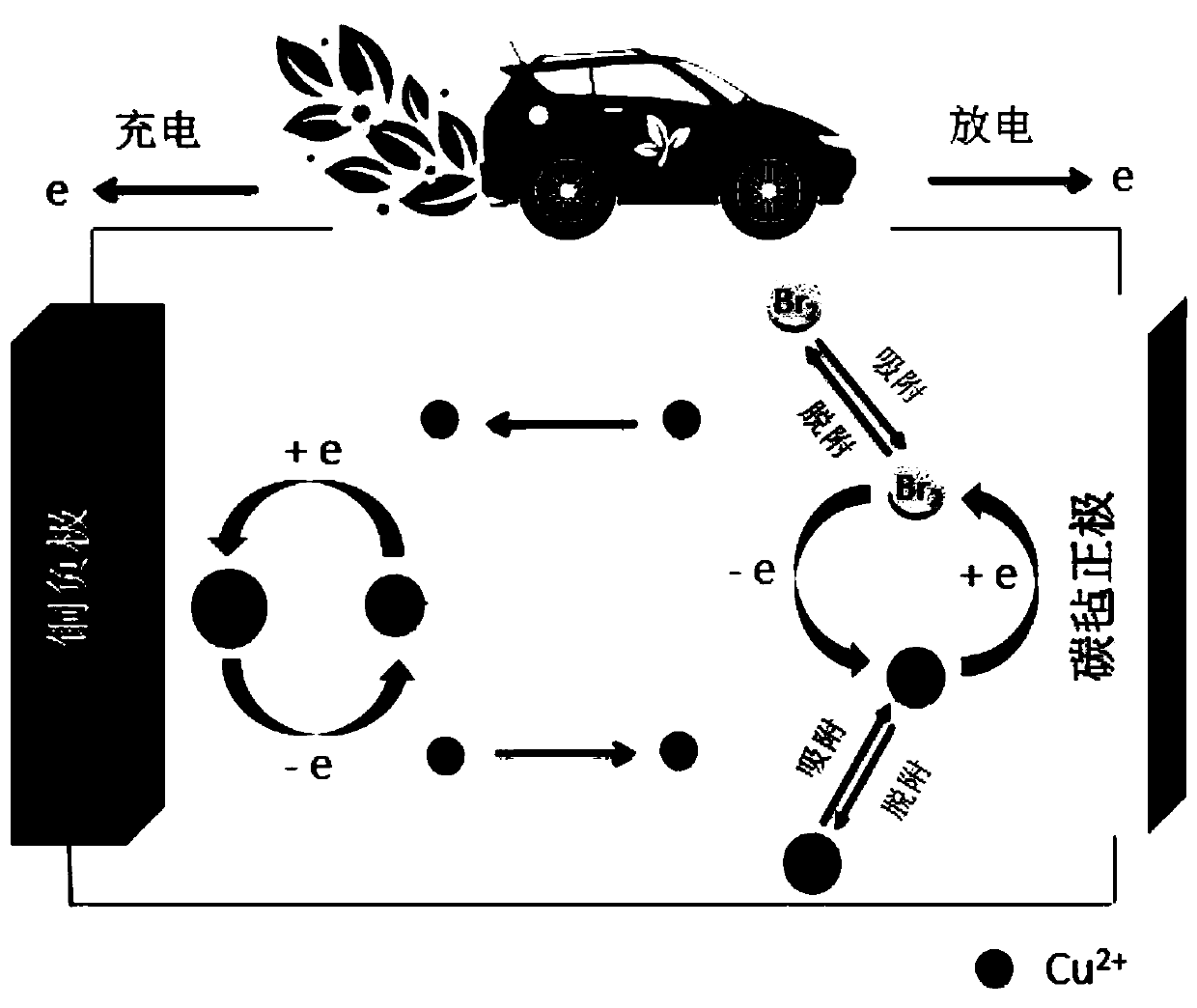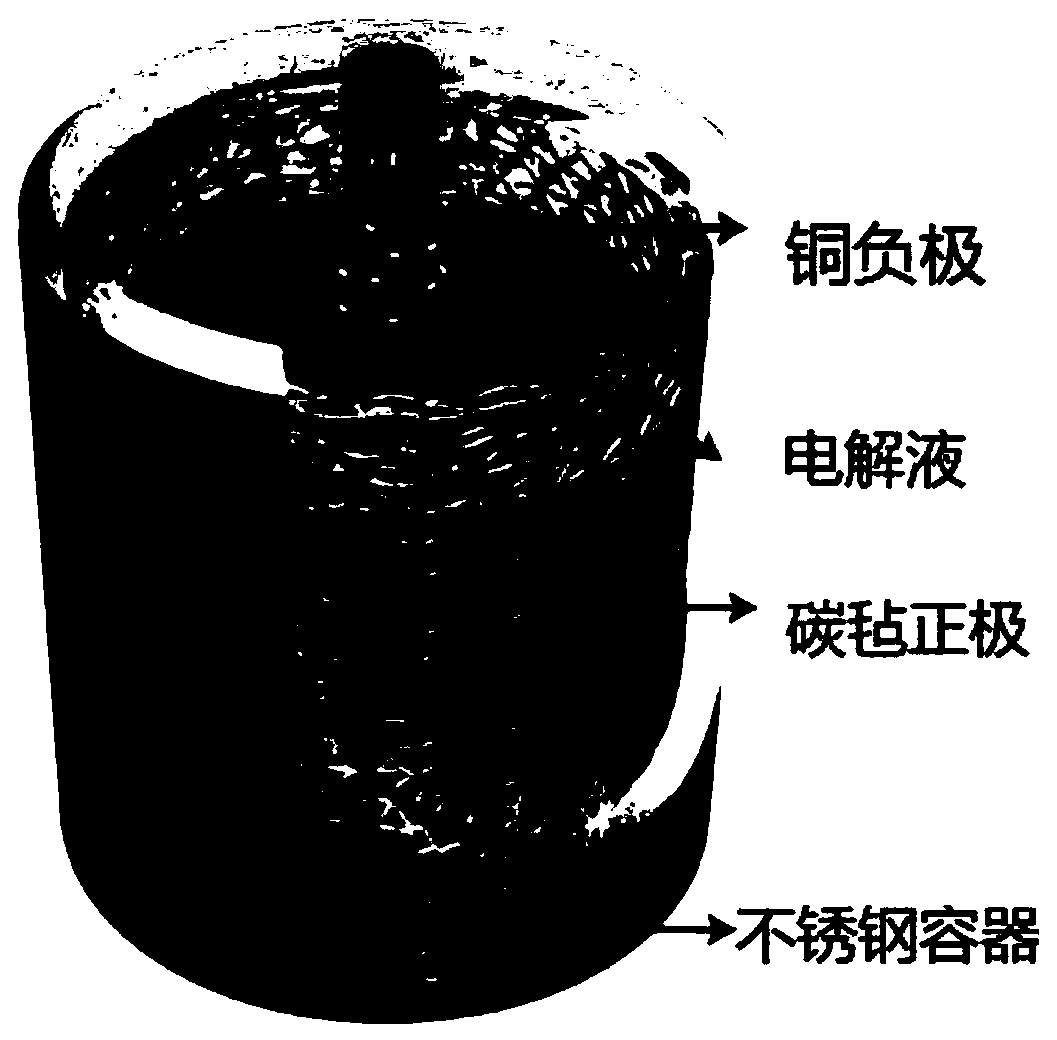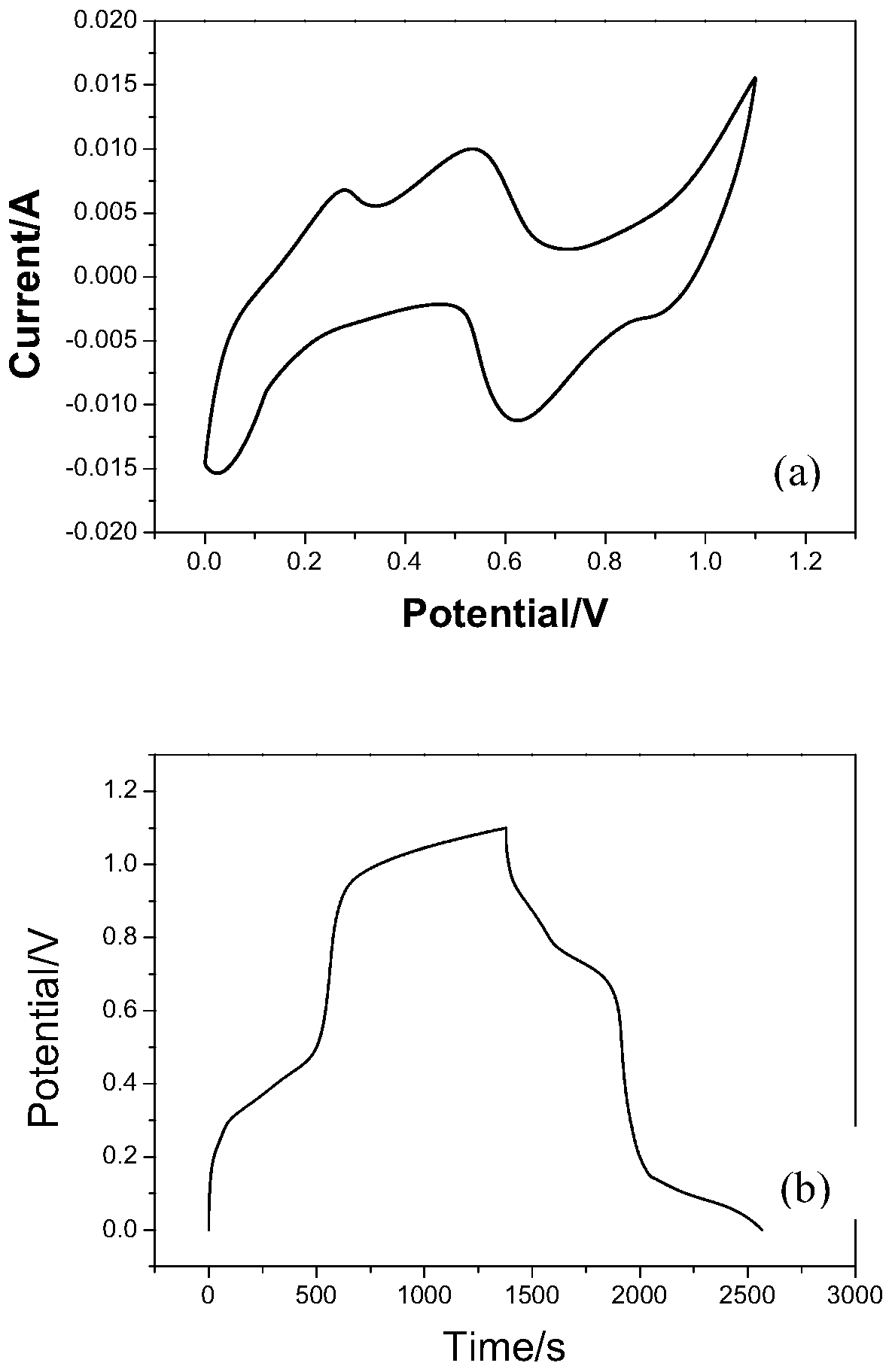Novel aqueous copper-bromine secondary battery
A secondary battery, water system technology, applied in the field of electrochemical energy storage, to achieve the effects of excellent rechargeability, low cost, and stable charge and discharge
- Summary
- Abstract
- Description
- Claims
- Application Information
AI Technical Summary
Problems solved by technology
Method used
Image
Examples
Embodiment 1
[0023] The invention provides a novel aqueous copper-bromine secondary battery, comprising a positive pole, a negative pole and an electrolyte, and the positive pole can realize Br- / Br 2 An electrode material for redox reaction, the negative pole is metal copper, copper alloy or its modification, and the electrolyte contains Cu 2+ and Br- / Br 2 .
[0024] Such as figure 1 As shown, the battery reaction mechanism of the aqueous copper-bromine secondary battery is as follows: the negative electrode of the aqueous copper-bromine secondary battery undergoes reversible deposition and oxidation reaction of copper ions on metal copper or its negative electrode substrate, and the positive electrode bromine ion is adsorbed in a state that can realize Substances that mediate the redox reaction of bromide ions (e.g. figure 1 shown on the surface of the carbon material), and a reversible redox process occurs. By calculating the standard electrode potential of positive and negative reac...
Embodiment 2
[0036] Different concentrations of Br - / Br 2 Aqueous copper bromine secondary battery in aqueous solution:
[0037] Prepare the electrolyte: dissolve 16g of copper sulfate into 30ml of water to prepare a saturated solution of copper sulfate, and then add different masses of NaBr (0.2M, 0.16M, 0.14M, 0.13M, 0.125M, 0.12M, 0.1M, 0.08M, 0.06M, 0M) and Br 2 (respectively 0M, 0.04M, 0.06M, 0.07M, 0.075M, 0.08M, 0.1M, 0.12M, 0.14M, 0.2M), fully stirred to prepare the electrolyte.
[0038] The assembly of the aqueous copper-bromine secondary battery: the shell is made of stainless steel or polymer material, a copper rod is inserted in the middle as the negative electrode, and the copper rod is used as the conductor for drawing the current, and the positive electrode material is a large piece of curled graphite felt (purchased from Dalian Longtian Science and Technology Co., Ltd. ), the electrolyte is each mixed solution prepared above, fills the whole battery system, and the uppe...
Embodiment 3
[0043] Modification of graphite felt:
[0044] The graphite felt is subjected to O-Plasma (oxygen plasma) treatment in a tube furnace filled with an ammonia atmosphere at 1000°C (applying sufficient energy to oxygen to ionize it into a plasma state, using the properties of these active components to treat sample surface).
[0045] The preparation of the electrolyte and the electrical performance test are the same as in the above-mentioned Example 2. The positive electrode material used in the assembly of the aqueous copper-bromine secondary battery is modified graphite felt, and the rest are the same as in the Example 2. The results are shown in Table 2.
[0046] Table 2
[0047]
PUM
 Login to View More
Login to View More Abstract
Description
Claims
Application Information
 Login to View More
Login to View More - R&D
- Intellectual Property
- Life Sciences
- Materials
- Tech Scout
- Unparalleled Data Quality
- Higher Quality Content
- 60% Fewer Hallucinations
Browse by: Latest US Patents, China's latest patents, Technical Efficacy Thesaurus, Application Domain, Technology Topic, Popular Technical Reports.
© 2025 PatSnap. All rights reserved.Legal|Privacy policy|Modern Slavery Act Transparency Statement|Sitemap|About US| Contact US: help@patsnap.com



